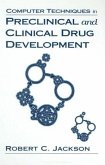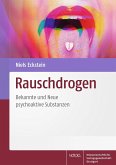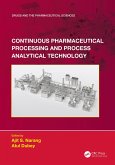Roger O. McClellan
Tobacco-Specific N-Nitrosamines Recent Advances
Roger O. McClellan
Tobacco-Specific N-Nitrosamines Recent Advances
- Gebundenes Buch
- Merkliste
- Auf die Merkliste
- Bewerten Bewerten
- Teilen
- Produkt teilen
- Produkterinnerung
- Produkterinnerung
This remarkable book provides updates on various aspects of tobacco - its chemical and biological nature, and its physiological effects.
Andere Kunden interessierten sich auch für
![Tobacco-Specific N-Nitrosamines Recent Advances Tobacco-Specific N-Nitrosamines Recent Advances]() Roger O. McClellanTobacco-Specific N-Nitrosamines Recent Advances52,99 €
Roger O. McClellanTobacco-Specific N-Nitrosamines Recent Advances52,99 €![Computer Techniques in Preclinical and Clinical Drug Development Computer Techniques in Preclinical and Clinical Drug Development]() Robert C. JacksonComputer Techniques in Preclinical and Clinical Drug Development218,99 €
Robert C. JacksonComputer Techniques in Preclinical and Clinical Drug Development218,99 €![Rauschdrogen Rauschdrogen]() Niels EcksteinRauschdrogen59,80 €
Niels EcksteinRauschdrogen59,80 €![Continuous Pharmaceutical Processing and Process Analytical Technology Continuous Pharmaceutical Processing and Process Analytical Technology]() Continuous Pharmaceutical Processing and Process Analytical Technology231,99 €
Continuous Pharmaceutical Processing and Process Analytical Technology231,99 €![Medical Product Regulatory Affairs Medical Product Regulatory Affairs]() John J. TobinMedical Product Regulatory Affairs69,99 €
John J. TobinMedical Product Regulatory Affairs69,99 €![Pulver-Atlas der Drogen der deutschsprachigen Arzneibücher Pulver-Atlas der Drogen der deutschsprachigen Arzneibücher]() Pulver-Atlas der Drogen der deutschsprachigen Arzneibücher39,00 €
Pulver-Atlas der Drogen der deutschsprachigen Arzneibücher39,00 €![Biogene Arzneimittel Biogene Arzneimittel]() Eberhard TeuscherBiogene Arzneimittel87,00 €
Eberhard TeuscherBiogene Arzneimittel87,00 €-
-
-
This remarkable book provides updates on various aspects of tobacco - its chemical and biological nature, and its physiological effects.
Produktdetails
- Produktdetails
- Verlag: CRC Press
- Artikelnr. des Verlages: 1156
- Seitenzahl: 140
- Erscheinungstermin: 10. Mai 1996
- Englisch
- Abmessung: 286mm x 221mm x 12mm
- Gewicht: 703g
- ISBN-13: 9780849311567
- ISBN-10: 084931156X
- Artikelnr.: 26156556
- Herstellerkennzeichnung
- Libri GmbH
- Europaallee 1
- 36244 Bad Hersfeld
- gpsr@libri.de
- Verlag: CRC Press
- Artikelnr. des Verlages: 1156
- Seitenzahl: 140
- Erscheinungstermin: 10. Mai 1996
- Englisch
- Abmessung: 286mm x 221mm x 12mm
- Gewicht: 703g
- ISBN-13: 9780849311567
- ISBN-10: 084931156X
- Artikelnr.: 26156556
- Herstellerkennzeichnung
- Libri GmbH
- Europaallee 1
- 36244 Bad Hersfeld
- gpsr@libri.de
McClellan\, Roger O.
1. Introduction 2. Formation and Analysis of Tobacco-Specific N-Nitrosamines 3. Synthesis of Tobacco-Specific N-Nitrosamines and Their Metabolites and Results of Related Bioassays 4. Endogenous Formation of Nitrosamines and Oxidative DNA-Damaging Agents in Tobacco Users 5. Recent Studies on Mechanisms of Bioactivation and Detoxification of 4-(Methylnitrosamino)-1-(3-Pyridyl)-1-Butanone (NNK), A Tobacco-Specific Lung Carcinogen 6. Epidemiology of Cancer by Tobacco Products and the Significance of TSNA 7. The Biological Significance of Tobacco-Specific N-Nitrosamines: Smoking and Adenocarcinoma of the Lung 8. Comparative Carcinogenicity, Metabolism, Mutagenicity, and DNA Binding of 7H-Dibenzo[c,g]carhazole and Dibenz[a,j]acridine 9. Concluding Remarks
1. Introduction 2. Formation and Analysis of Tobacco
Specific N
Nitrosamines 3. Synthesis of Tobacco
Specific N
Nitrosamines and Their Metabolites and Results of Related Bioassays 4. Endogenous Formation of Nitrosamines and Oxidative DNA
Damaging Agents in Tobacco Users 5. Recent Studies on Mechanisms of Bioactivation and Detoxification of 4
(Methylnitrosamino)
1
(3
Pyridyl)
1
Butanone (NNK), A Tobacco
Specific Lung Carcinogen 6. Epidemiology of Cancer by Tobacco Products and the Significance of TSNA 7. The Biological Significance of Tobacco
Specific N
Nitrosamines: Smoking and Adenocarcinoma of the Lung 8. Comparative Carcinogenicity, Metabolism, Mutagenicity, and DNA Binding of 7H
Dibenzo[c,g]carhazole and Dibenz[a,j]acridine 9. Concluding Remarks
Specific N
Nitrosamines 3. Synthesis of Tobacco
Specific N
Nitrosamines and Their Metabolites and Results of Related Bioassays 4. Endogenous Formation of Nitrosamines and Oxidative DNA
Damaging Agents in Tobacco Users 5. Recent Studies on Mechanisms of Bioactivation and Detoxification of 4
(Methylnitrosamino)
1
(3
Pyridyl)
1
Butanone (NNK), A Tobacco
Specific Lung Carcinogen 6. Epidemiology of Cancer by Tobacco Products and the Significance of TSNA 7. The Biological Significance of Tobacco
Specific N
Nitrosamines: Smoking and Adenocarcinoma of the Lung 8. Comparative Carcinogenicity, Metabolism, Mutagenicity, and DNA Binding of 7H
Dibenzo[c,g]carhazole and Dibenz[a,j]acridine 9. Concluding Remarks
1. Introduction 2. Formation and Analysis of Tobacco-Specific N-Nitrosamines 3. Synthesis of Tobacco-Specific N-Nitrosamines and Their Metabolites and Results of Related Bioassays 4. Endogenous Formation of Nitrosamines and Oxidative DNA-Damaging Agents in Tobacco Users 5. Recent Studies on Mechanisms of Bioactivation and Detoxification of 4-(Methylnitrosamino)-1-(3-Pyridyl)-1-Butanone (NNK), A Tobacco-Specific Lung Carcinogen 6. Epidemiology of Cancer by Tobacco Products and the Significance of TSNA 7. The Biological Significance of Tobacco-Specific N-Nitrosamines: Smoking and Adenocarcinoma of the Lung 8. Comparative Carcinogenicity, Metabolism, Mutagenicity, and DNA Binding of 7H-Dibenzo[c,g]carhazole and Dibenz[a,j]acridine 9. Concluding Remarks
1. Introduction 2. Formation and Analysis of Tobacco
Specific N
Nitrosamines 3. Synthesis of Tobacco
Specific N
Nitrosamines and Their Metabolites and Results of Related Bioassays 4. Endogenous Formation of Nitrosamines and Oxidative DNA
Damaging Agents in Tobacco Users 5. Recent Studies on Mechanisms of Bioactivation and Detoxification of 4
(Methylnitrosamino)
1
(3
Pyridyl)
1
Butanone (NNK), A Tobacco
Specific Lung Carcinogen 6. Epidemiology of Cancer by Tobacco Products and the Significance of TSNA 7. The Biological Significance of Tobacco
Specific N
Nitrosamines: Smoking and Adenocarcinoma of the Lung 8. Comparative Carcinogenicity, Metabolism, Mutagenicity, and DNA Binding of 7H
Dibenzo[c,g]carhazole and Dibenz[a,j]acridine 9. Concluding Remarks
Specific N
Nitrosamines 3. Synthesis of Tobacco
Specific N
Nitrosamines and Their Metabolites and Results of Related Bioassays 4. Endogenous Formation of Nitrosamines and Oxidative DNA
Damaging Agents in Tobacco Users 5. Recent Studies on Mechanisms of Bioactivation and Detoxification of 4
(Methylnitrosamino)
1
(3
Pyridyl)
1
Butanone (NNK), A Tobacco
Specific Lung Carcinogen 6. Epidemiology of Cancer by Tobacco Products and the Significance of TSNA 7. The Biological Significance of Tobacco
Specific N
Nitrosamines: Smoking and Adenocarcinoma of the Lung 8. Comparative Carcinogenicity, Metabolism, Mutagenicity, and DNA Binding of 7H
Dibenzo[c,g]carhazole and Dibenz[a,j]acridine 9. Concluding Remarks








